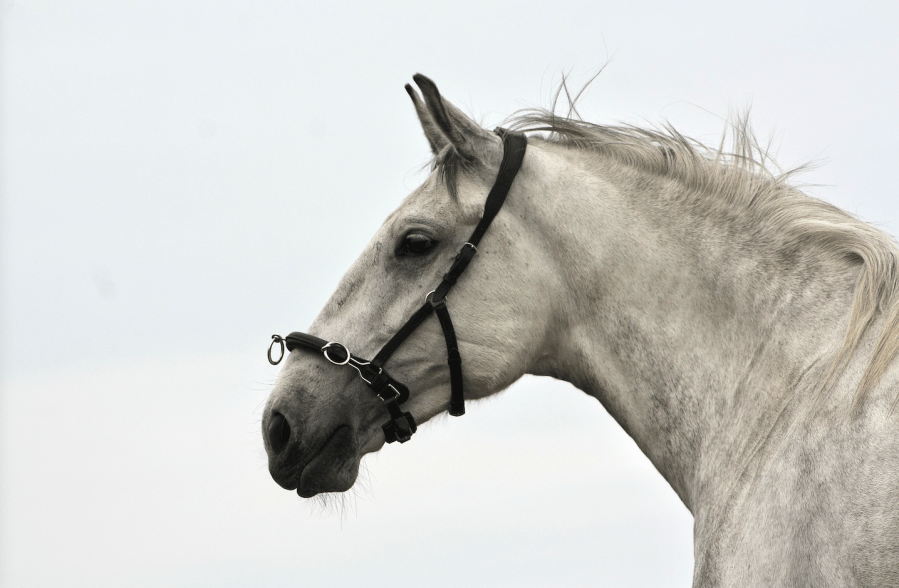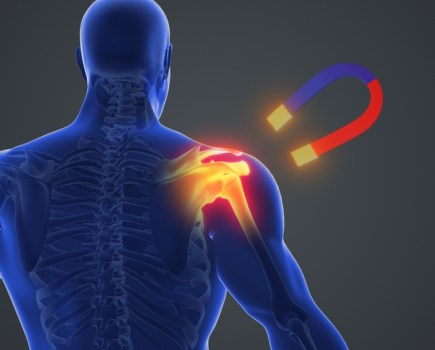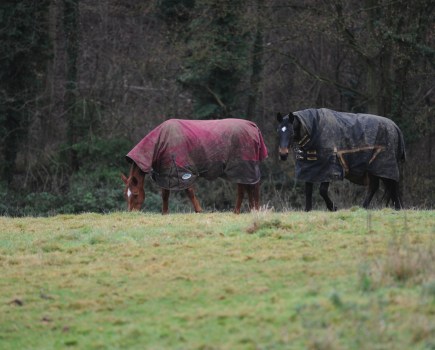In order to do it correctly, you’ll need to have the right kit and equipment for lunging a horse. Basic essentials are a lunge rein that’s fit for purpose and long enough to do the job properly.
You will also need a lunging cavesson (unless you plan to use a bridle — more on this later), roller and many people choose to have a lunging whip, which can be a useful aid that acts as an extension of your arm. There are other optional lunging aids to consider as well.
Gloves, a riding hat and a good pair of riding (or yard) boots are also vital for keeping you comfortable and safe.
Useful horse lunging equipment
- Bridle or cavesson
- Lunge rein
- Roller (or saddle, but make sure the stirrups are removed or secured so that they don’t flap around as the horse moves)
- Lunging whip
- For the rider, a hat, gloves and boots are essential
Training aids
You can find out more about what each training aid is and how it works by clicking on its name:
Bridle or cavesson
You can choose to lunge from either your horse’s bridle or a lunge cavesson. The key difference between the two is lunging from a cavesson means you are not controlling your horse via their bit.
Lunging from a cavesson
A lunge cavesson (see main image, above) is made from webbing or leather and has a number of rings on the front of the noseband for the lunge line to attach to.
How to fit it
- Check that you can slide one finger between your horse’s face and the lunge cavesson.
- The noseband should sit a thumb’s width below the bottom of your horse’s cheekbone.
- The strap that fastens under the jaw keeps the cavesson stable, so it needs to fit snuggly with room for one finger.
- If you want to fit a bridle over the top of the cavesson, remove the noseband, reins and browband from the bridle so that it fits as comfortably as possible.
Lunging from a bridle
Lunging from a bridle can offer a little more control, but if you’re going to be using a training aid such as side reins as well it can give the horse conflicting messages.
This is because side reins attach to the bit and so the horse will constantly feel pressure in their mouth, which they usually associate with slowing down or stoping.
That’s why, if you choose to use a lunging aid, it’s better to use a cavesson rather than a bridle.
Attaching a lunge rein
There are two main ways to attach the lunge line to the bit. Bear in mind that with both of the following options, you will need to change the lunge rein around every time you change the rein.
1 Over the horse’s head
Run the lunge line through the inside bit ring, up the side of your horse’s head and across their poll.
Clip it to the outside bit ring (facing outwards, so it doesn’t rub their cheek).
This means there is pressure over the horse’s poll rather than just their mouth.
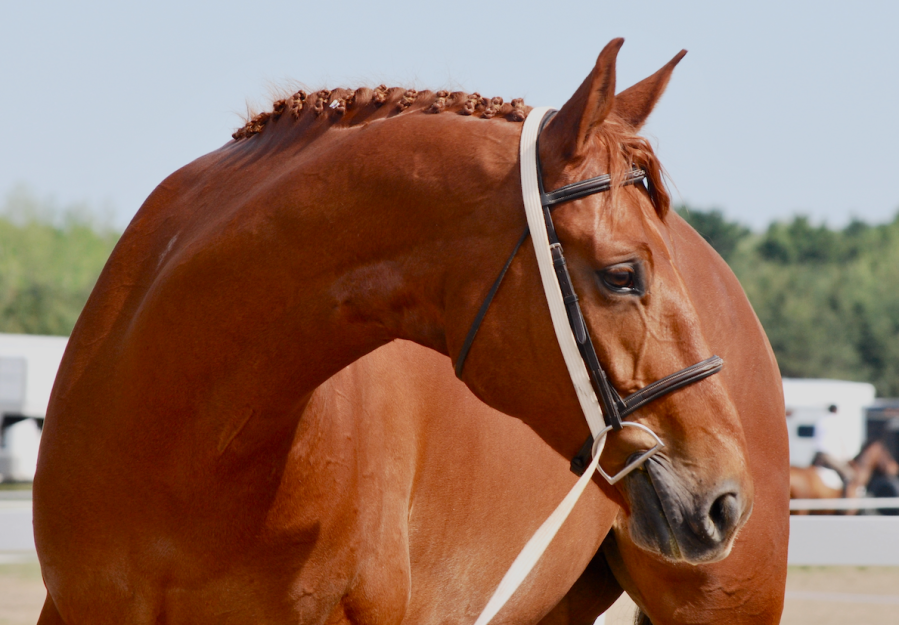
2 Under the chin
Pass the lunge line through the bit ring, under the horse’s chin and fasten it on the opposite bit ring.
Never attach the lunge line to the inside bit ring (ie the one closest to you on the inside of the circle) because there is a risk of the bit being pulled through the horse’s mouth.
They will also feel uneven pressure if you only attach to one side of the bit.
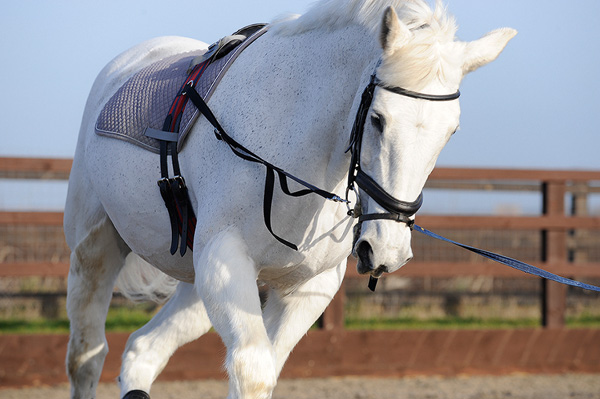
Should you use a lunging aid?
The use of lunging aids causes great debate amongst horse owners.
Personally, I have found my horses lunge well in side reins, providing they are working forward into the contact.
Ultimately, a training aid that is fitted correctly, used well and for the right reasons, can be of great help when working a horse on the lunge.
The problems start when it doesn’t fit properly and so the horse becomes uncomfortable and/or anxious.
If the person lunging a horse doesn’t really understand how to use the training aid properly, this will also cause the horse discomfort.
Choosing a training aid
Physical ability
Before using any training aid, make sure your horse is physically able to do what’s being asked.
Using any gadget when they have an underlying problem won’t help at all. This could be anything from level of fitness, age and training, through to physical pain in the horse’s mouth or body.
Read the instructions
Do this before using any lunging equipment or aids so that you understand how it works and how to fit it for your horse.
If you’re unsure, ask for advice from a trainer or someone experienced and trustworthy first.
Start with it loose
Always start with the training aid on the loosest setting so your horse gets used to wearing it and is able to stretch and warm up properly first. Adjust it gradually.
Don’t expect miracles
Any lunging aid will only work if your technique is up to scratch and it is never a quick fix. Keep your horse moving forwards on the lunge and work them evenly on both reins.
Less is more
Keep lunging sessions short to avoid injury and gradually increase the length of time you use the training aid.
Make sure you loosen it (or remove it) and allow the horse to cool down and stretch at the end of every session.
Do you really need a lunging aid?
Using a lunging aid is personal choice. Using an aid incorrectly can cause a horse discomfort and confusion, so it is better not to use one if you are not sure how to use it properly.
If you do decide to use one, follow these five golden rules:
- Make sure your horse is physically able to do what’s being asked of them when you’re lunging. Using any gadget when they have an underlying problem will only make it worse.
- Read the instructions before using the lunging aid so you know how to fit it correctly and understand how it works. If you’re unsure, ask for advice from your trainer first.
- Always start with the aid on the loosest setting so your horse gets used to wearing it. Then adjust it gradually.
- Don’t expect miracles. Horse lunging equipment will only work if your technique is up to scratch. It’s important to keep your horse moving forwards on the lunge and to work them evenly on both reins.
- Keep your lunging sessions short to avoid the risk of injury and gradually increase the length of time.
Horse lunging equipment: when less is more
Grand Prix dressage rider and trainer Sarah Ridd likes to keep her lunging equipment really simple.
“All you need is a roller (or saddle), a lunge cavesson, your horse’s bridle and I like to use side reins”, she says.
Sometimes less really is more. Find what lunging equipment works best for you and your horse — and away you go!
Images © Shutterstock

